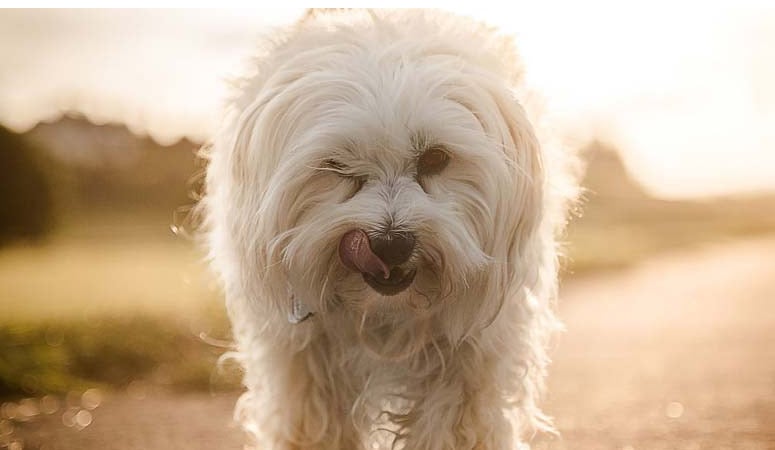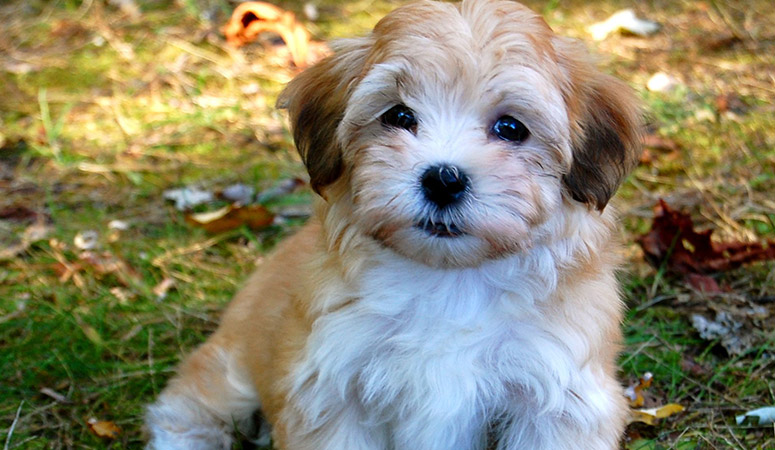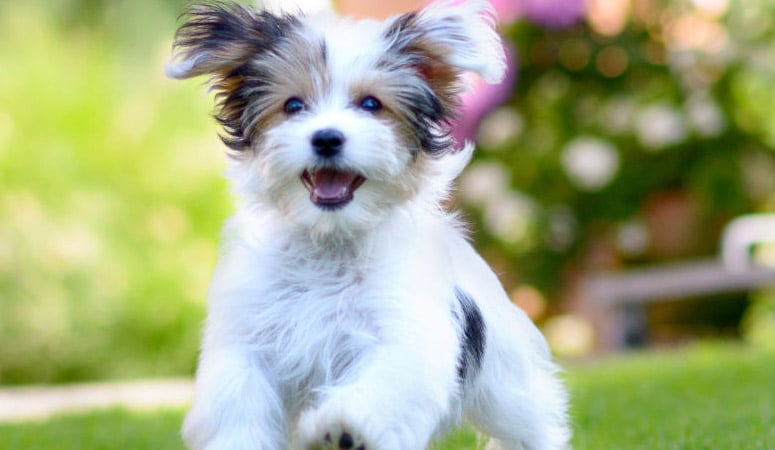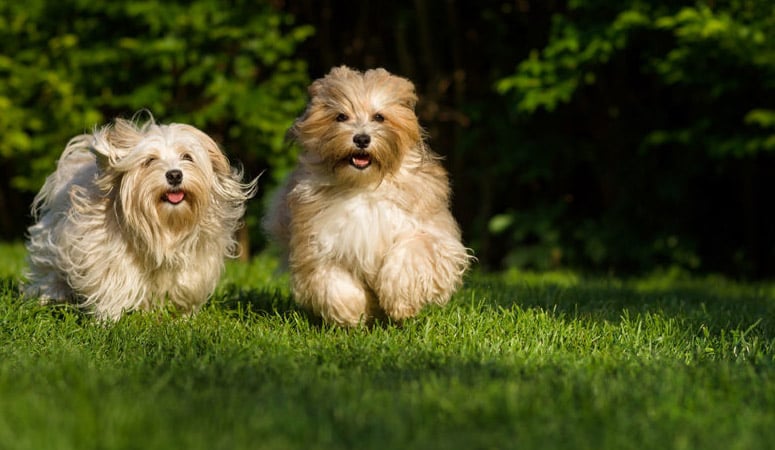Havanese
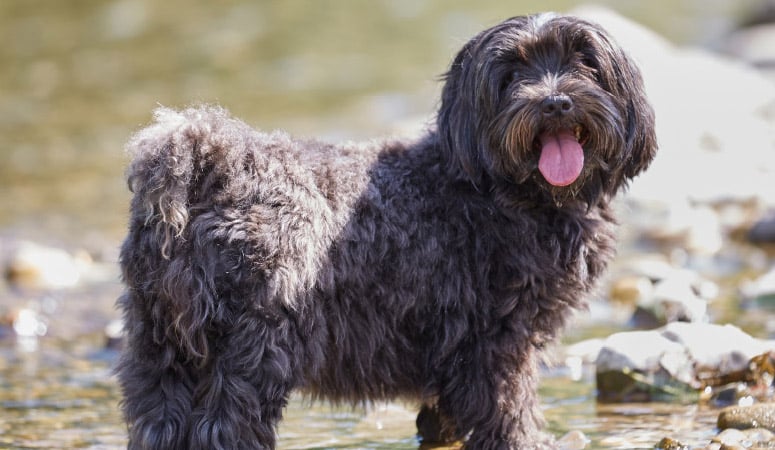
Originated from Cuba and name after Cuba’s capital city, Havanese is in small size and stature with a tail carried over its back and ears that drop and fold. These dogs are playful, curious, affectionate, and outgoing, their cheerful personality and friendly temperament help them become one of America’s most popular pups.
| Other Names | Bichon Havaneis, Blanquito De la Habana, Havana Silk Dog |
| Color | Varied colors and patterns including white, chocolate, black and tan, black, gold brindle, fawn and red brindle |
| Height | Males: 8-12 inches. Females: 8-12 inches. |
| Weight | Males: 7-14 pounds. Females: 7-14 pounds. |
| Life Span | 14-16 years |
| Personality | Intelligent, Outgoing, Funny |
| Exercise | Regular Exercise |
| Origin |
| Popularity | #22 |
| Groom Needs | 2-3 Times a Week |
| Kids Friendly | Yes with supervision |
| Dog Friendly | Yes with supervision |
| Watch Dog | |
| Family Dog | |
| Litter Size | 4 |
Havanese Pictures
Havanese Video
Introduction
The Havanese make good companion dogs; vivacious and cheerful. They are considered special in being the only dogs to have a Cuban origin. Little dogs with a springy gait, Havanese are colorful in appearance and nature. The beauty and wonder in this dog breed are not only about their curled-up tail or their soft, silky coat which comes in different color varieties but also in the fact that they don’t bark often.
A Havanese would likely weigh between 8 and 13 pounds, a testament to their little size despite being covered by a double coat of soft fur. Standing at the shoulder a standard Havanese can measure up to around 8-12 inches. The Havanese is your sweet and dramatic little Cuban dog. Mind you, a Havanese is disposed to being a watchdog as well. A remarkable thing about them is the ability to act in a funny manner. A Havanese lives, on the average, 15-17 happy years.
Living with Havanese
The Havanese has a long, soft, and silky coat which daily brushing to prevent mats and tangles, and frequent bath to keep it clean. Generally, it is wise to keep their hair above the eyes tied up to prevent irritation or have their coat clipped to a short trim.
More involved monthly grooming at home or at the groomer’s is necessary. And the watery eyes and resulting tearstains are common in the Havanese, owners can gently clean the corners of their eyes daily to prevent tear-stain of the lighter-colored hair in the area.
Check their ears regularly for signs of wax buildup, irritation, or infection and clean with a cotton ball and a veterinarian-approved cleanser. Brush your Havanese’s teeth at least two or three times a week to remove tartar buildup and the bacteria that lurk inside it. Daily brushing is better to keep fresh breathe and prevent gum disease. Trim nails once or twice a month if your dog doesn’t wear them down naturally.
The Havanese has moderate exercise needs, a long walk or an active game of fetch about 40 minutes total each day would keep the dog happy. Frolicking inside the home can also provide enough exercise. The owner should never over-exercise a Havanese of any age, if the dog is panting and struggling, it is best to take him home.
The Havanese dogs do well in a variety of homes, they can adapt to apartment living or a large home with a yard as they are indoor dogs and like to spend time with their family. If the Havanese are not expected to mingle with much larger dogs, taking him to a dog park is a good choice.
Generally, it is recommended to feed a Havanese with a half to one cup of high-quality dry dog food every day, divided into two meals. More importantly, the food amount should depend on the dog’s weight, size, age, and activity level. There should be fresh and clean water at all times.
Some dogs are easy to get overweight, so you need to watch their calorie consumption and weight level all the time. Treats may be an important aid in training, but excessive intake can lead to obesity. Also, owners need to distinguish which human food is safe for dogs and which are not. If you have any problems with your dog’s weight or diet, just consult from your veterinarian.
The Havanese is prone to the following health conditions: patellar luxation, eye concerns, hip dysplasia, liver shunt, heart disease, deafness…
Major concerns: none
Minor concerns: patellar luxation
Occasionally seen: elbow dysplasia, deafness, mitral valve insufficiency, chondrodysplasia, Legg-Perthes, portacaval shunt
Suggested tests:
Patella Evaluation
BAER Testing
Hip Evaluation
Ophthalmologist Evaluation
Total Annual Cost: $2674
Cost is estimated for the first year and may vary depending on many factors, such as dog food, health care, leash, collar, licensing, possible fencing, crates, training and obedience classes, dog-walking, grooming, treats, toys, flea, tick, and heart-worm meds, microchips, etc.
Havanese is highly intelligent and eager to please, the positive methods could help the dog be trained easily. It is recommended to start early socialization and puppy training classes to make sure that your dog grows into a well-adjusted, well-mannered companion. And training methods based on praise and rewards could work best, the harsh corrections are not suitable for this dog breed. Gentle, patient training will result in a wonderful companion dog.
Havanese is a natural performer and he can study advanced tricks training quickly, and he is always ready to put on a show. Besides, Havanese could perform well in agility competitions and advanced training.
History
The Havanese come from a family of dogs known as the Bichon which are believed to have originated from Tenerife. Some evidence suggests that the bichons of Malta and, perhaps, Bologna are connected to the ancestry of bichons in general. There’s a disagreement as to which bichon gave descent to the Havanese. Some experts claim that the first generation of Havanese was of bichons that were imported by sailors from Tenerife (Spain) into Cuba around the late 16th century, others believe that the dogs were actually shipped from Malta. However, what is clear is that the Havanese breed was developed in Cuba.
As time went on, the popularity of the Havanese breed began to expand among the noble and common alike. Soon, attempts were made to modify the features of the earliest Havanese, which probably involved a cross with a variety of companion dogs, including an en Vogue Poodle. However, during the Cuban Revolution, breeders fled from their homes into neighboring countries. Many of them abandoned their dogs in Cuba, which led to a decline in the population of the Havanese breeds by the end of the conflict which lasted a couple of years.
In the 1970s, there was a rekindled interest in the Havanese breed by American breeders who sought to develop the breed to a standard, capable of competing at the dog show. There were only about 11 Havanese dogs available in all, at that time. But with consistency and dedication, the breed was bred back to a place of popularity, albeit small. Now, the American Kennel Club ranks the Havanese 24th most popular dog breed in the U.S.
Helpful Information
Breed Club: HAVANESE CLUB OF AMERICA
Breed Club Link: https://www.havanese.org/
Breed Club Rescue: Havanese Rescue Inc.
Breed Club Rescue Link: https://www.havaneserescue.com/

